US Military Impressed by a Polish artillery ISR System. No Purchases Planned for the Polish Army
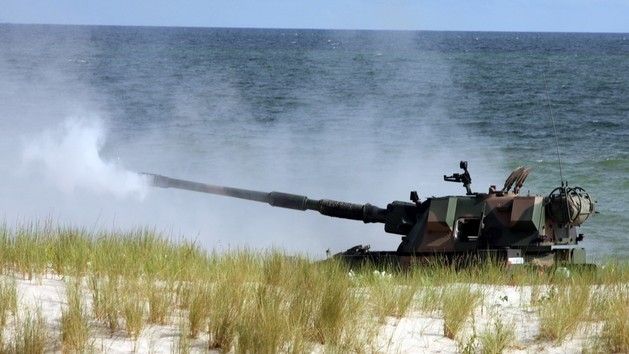
Polish Armed Forces suffer from numerous modernization deficiencies and delays. The military also uses some solutions that are on par with those used by NATO, and some are even at the level of advancement that is attractive for the officers serving in the allied forces, US Army included.
Artillery reconnaissance and fire control system undoubtedly belongs to the aforesaid group of systems. When speaking of the said solution, the word “system” needs to be used, as it includes the Polish FlyEye UAVs, Polish TOPAZ fire control system and Polish LIWIEC radar. Polish Ministry of Defence, despite the needs and requirements emerging in the artillery units, is not planning acquisition of the aforesaid systems. Without reconnaissance assets available at a proper level, the Polish cannons, mortars and rocket launchers would remain virtually useless on the battlefield.
Joint Polish/US forces exercises offer an opportunity to get acquainted with the equipment operated by both nations. Despite the fact that the Americans are quite proud of their modern combat vehicles, it’s the Polish equipment, introduced into use following the Poland’s NATO accession, that sometimes shines and is advantageous over its counterparts used by the US forces. Topaz fire control system, coupled with the FlyEye UAVs and the modern LIWIEC firefinder radar is a good example of the above.
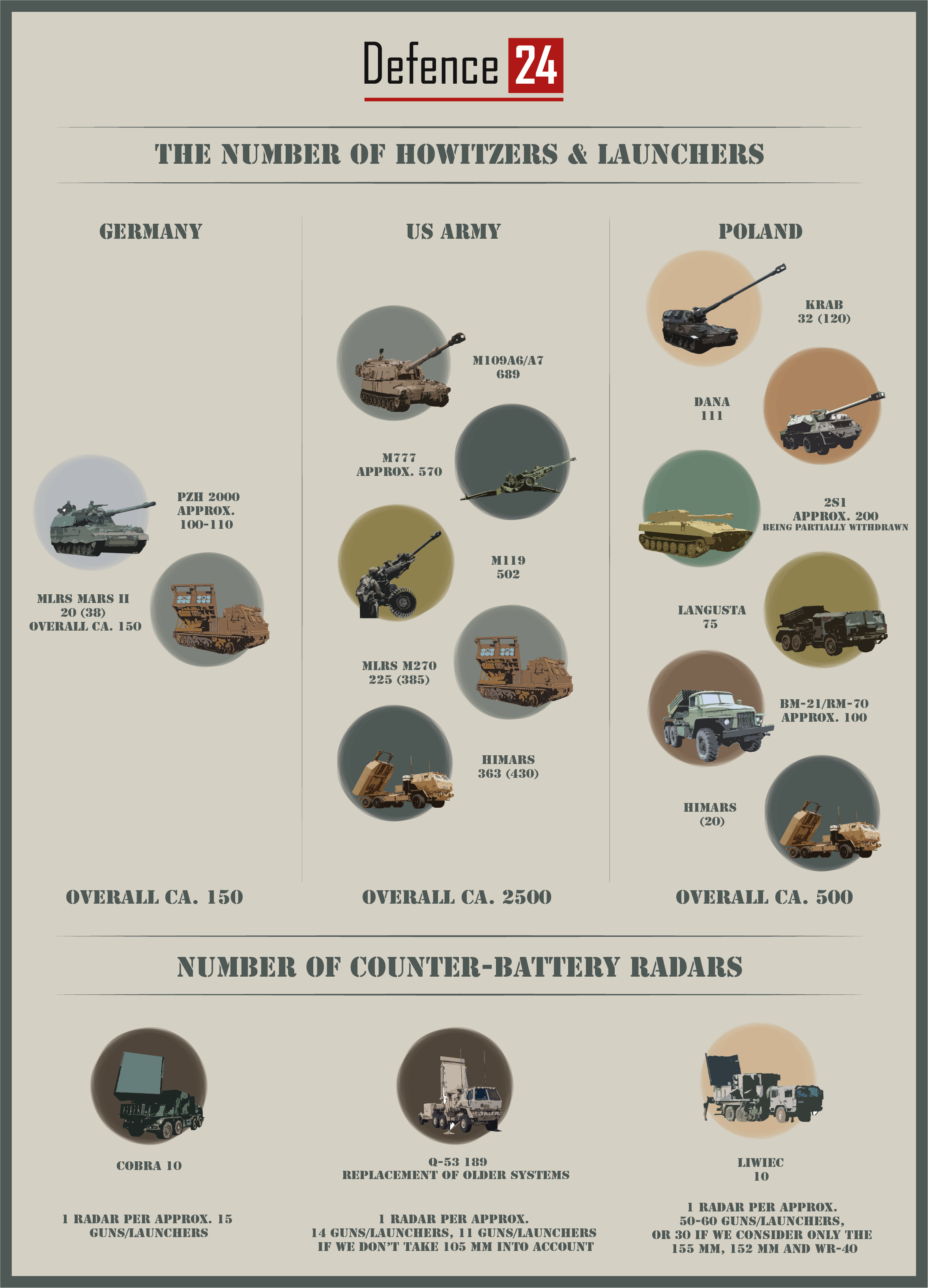
According to the representatives of the US Army, the Polish Armed Forces have a “unique” fire control system at their disposal that is integrated with the FlyEye UAVs. The above has been noticed in an official release issued by the US US Army, following an exercise involving elements of an armoured brigade deployed to Żagań in February 2017. Despite the fact that some of the Topaz-related solutions are much more advanced than those utilized by the Americans, they are still being developed.
Topaz system, also known as Topaz Automated Fire Control Package (PL: Zautomatyzowany Zestaw Kierowania Ogniem, abbrev. ZZKO) has been developed and is being manufactured by WB Electronics. Since 2001 it has become a part of the inventory used by the Polish tube and rocket artillery units, starting from the Gvozdika and Dana Howitzers, through Langusta rocket launchers, and new Krab howitzers and Rak mortars.
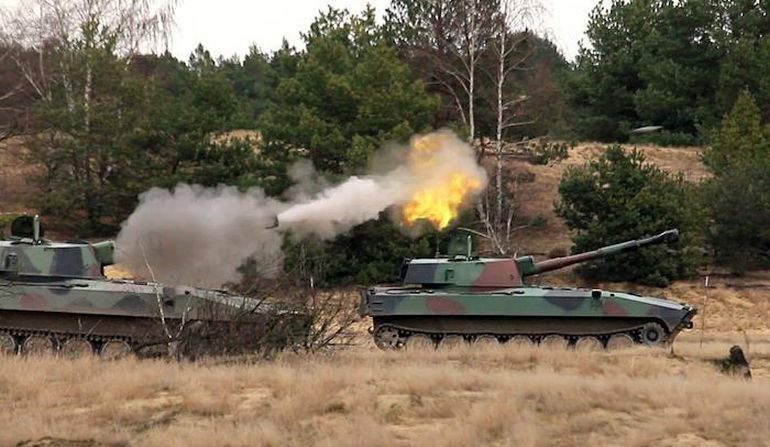
Topaz is a solution that is Polish in its entirety, and it is also a system that is fully automated. The data gathered by drones, radars and observation assets coupled with Topaz is being processed in real time and transformed into firing solutions for the cannons and launchers. There is no need for soldiers to be manually involved in that process. One may say that Topaz digital fire control solution has created a revolution in the Polish artillery units, pushing it towards the domain of the 21st Century.
FlyEye - The Topaz’s Eye
FlyEye UAV is one of the main sensors embedded within the Topaz system. Since the very inception it has been designed with Topaz in mind. Consequently, it has been tailored for being used by the artillery elements. Not only is FlyEye capable of designating the targets, it may also adjust the firing solutions on the basis of the observed target area. The above greatly and decisively accelerates the fire control process, enhancing its accuracy.
All happens in an automated manner, which also means it happens quick. There is no need to transfer the target coordinates by hand, which may be quite risky. One digit written down with an error and the coordinates are wrong which makes the rounds miss the target. Let us add that design as such was created on the basis of the experience gathered by the artillerymen when using the first variants of the Israeli Orbiter UAVs. These were not embedded within the fire control system and thus they provided no capability as such for the user. Meanwhile, FlyEye UAV systems have been used by the Polish artillery units since the beginning of the current decade, with the last delivery happening in 2013.
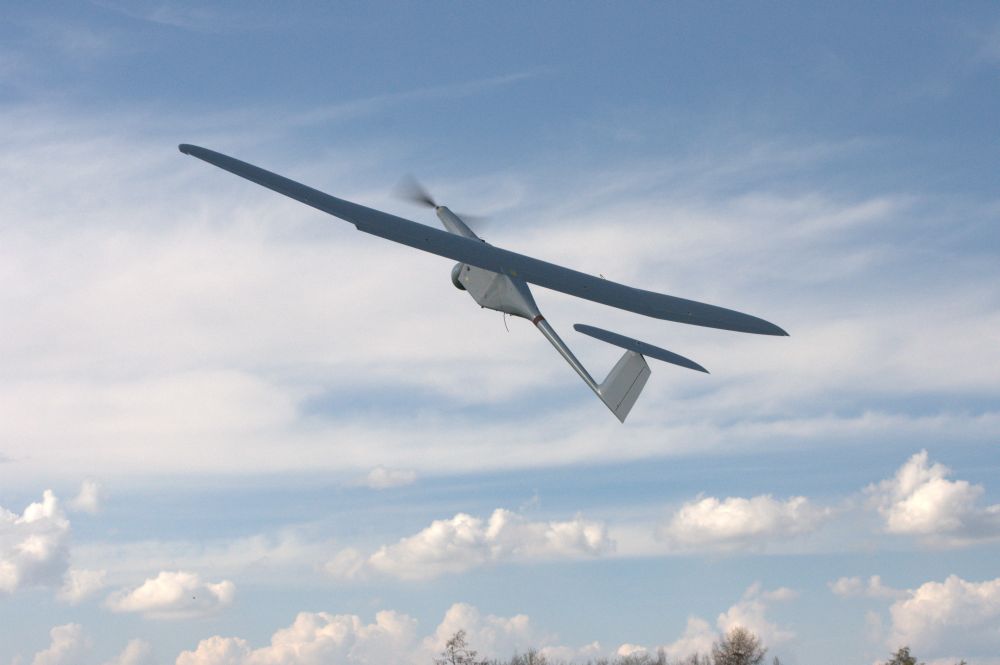
US Army Praising the Polish System
Topaz system’s abilities fused with the FlyEye’s operational envelope have been noticed and appreciated by the US Forces, during an exercise organized within the framework of NATO Eastern Flank reinforcement. In February 2017 the US Army issued a press release concerning the benefits that the use of Topaz may bring in laying down artillery fire. The above refers to the training undertaken by the 120 mm mortars element of the 4th Squadron, 10th Regiment of the US Army Cavalry unit that is a part of the 3rd Brigade of the 4th Infantry Division, maintaining its rotational presence in Poland. The Polish forces involved in the exercise included fire support controllers squad of the 10th Armoured Cavalry Brigade.
According to the US Army release, "the training has demonstrated a unique capability that Polish field artillery units possess that can augment the effectiveness of indirect fires for both U.S. and allied forces during combined operations. The Polish unmanned aircraft was used to spot and adjust indirect fires delivered by 4th Sqdn., 10th Cav. Regt.'s 120mm mortar sections.”
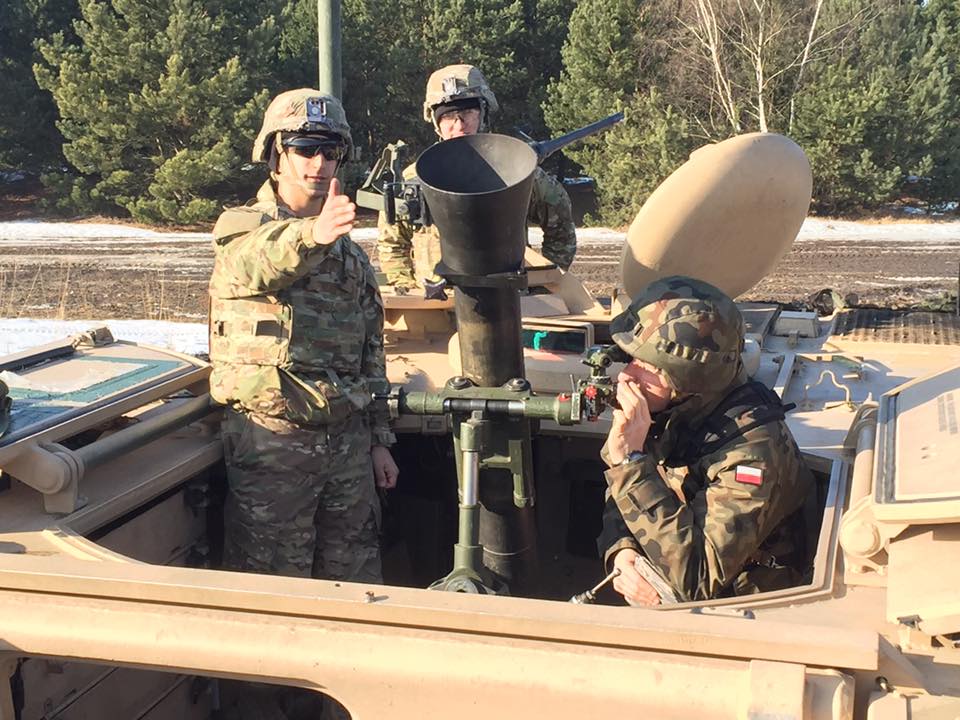
Cpt. Daniel Allison, FSO of the unit cited in the release said that the process of capturing the imagery, distance measurement between the impact point and the target and data transfer took mere seconds. Allison added that remaining in possession of data so accurate that is available so quickly may be decisive in combat scenarios. He noted that identification of similar capabilities shall be relevant for ensuring interoperability between NATO and the Polish military.
The US soldiers defined the ability of automated adjustment of firing solutions from a UAV coupled with the fire control system to be unique. One should note that the Russians have implemented a solution similar to Topaz as well but this happened following the outbreak of war in Ukraine, after the after-operation review took place.
In case of Poland the solution became operational in 2012. The fact that both the UAV as well as the fire control system were delivered by a single manufacturer (single capital group), and collaboration established by and between the manufacturer and the user, were very relevant here.
TOPAZ also exhibits a number of features that make this solution advantageous over its US counterparts utilized by the artillery units of the US Army on a daily basis. For instance, a standard AFATDS command station of a US artillery battalion is placed in a tent that is transported by a couple of Humvees. Solution as such is acceptable if air superiority is maintained. Should the enemy be able to detect and precisely attack the command point, application of the above arrangement is not possible.
Meanwhile Topaz command station (platoon and battery, as well as battalion level) may be installed on a wheeled/tracked armoured vehicle and may also be used when the vehicle is on the move.
The Americans are going to be able to implement a similar solution only after the AFADTS 7.0 system upgrade becomes available. The US Army representatives admit it directly that replacement of the current AFATDS system is required as it has been used in its current form since the 1990s. Despite numerous modifications, it does not comply with the contemporary requirements in full. One should add that new AFADTS upgrade would be created by Leidos, a new contractor. The aforesaid company has been selected during the first open procurement procedure related to this system since 1981.
Topaz, meanwhile, has been integrated on more than 500 vehicles today, including fire assets, command vehicles and armament repair platforms. The scope of use is being continuously expanded, as new Rak and Krab systems are delivered. Initially it was assumed that Topaz would also become a part of the Homar system. However, once the procurement type was changed, the first HIMARS battalion would be integrated with “off-the-shelf” AFADTS solution. No information has been released with regards to the AFADTS variant that is going to be delivered for the Polish units (new 7.0 or legacy versions).
Artillery Needs Recce Reinforcement
The Polish artillery ointment also includes a fly. The artillerymen have too little recce assets available at hand. Introduction of the Topaz system is also quite uncertain. The drones that were delivered by 2013 had a range of 30 kilometers. This is enough for Dana and Gvozdika systems, but it would not be enough for the Krab or Langusta platforms if they receive ammunition that would offer ranges reaching beyond 40 kilometers. WB has developed a FlyEye variant with a range of more than 50 kilometers, but only 3 packages, 4 drones in each, have been introduced into use, within the Territorial Defence component of the Polish military (the artillery is within the Land Forces).
The quantity of FlyEye UAVs available to the artillery is also also too low. They are available at the level of an artillery regiment which is a part of Division. The total number is not higher than 40-50 UAVs divided into around 10 packages. Half of the artillery battalions do not have assets as such available to them, as they are embedded directly within the brigades, and not being part of the artillery regiment.
Obviously, the drones could be assigned to a “brigade” level battalion, for the sake of an exercise. However, in real scenarios large scale support will not be available to a sufficient level. There is a shortage of UAVs as such today, one may say. Even if the older ones are modernized, which is a viable option that is also, reportedly, being considered, the quantity is still not going to be sufficient.
Drones? Solely If Provided by State-Owned Companies
The opportunity to reinforce the Polish UAV capabilities, was to be created through the Orlik and Wizjer programmes (tactical short range and mini-class UAV procurement, FlyEye belongs to the latter category). However, in 2016 the MoD decided to cancel the original procurement processes involving the WB Electronics company, and to involve solely the treasury-controlled entities in the said undertaking. Two years laster 8 Orlik drone sets have been ordered from a PGZ-led consortium. This would mean that 40 drones would be acquired with the relevant equipment. Pricetag: 800 million zlotys.
Most probably, the situation related to the Wizjer programme (mini-class UAVs) is similar. Here, FlyEye UAV system meets the requirements. The above is a guess, since following the initial releases pertaining to reassignment of the programme to the treasury-owned companies, the matter became confidential. When asked about the integration of the Wizjer platform with the Topaz system, and about whether there is any intention at all to acquire Topaz-integrated UAVs, the MoD stated the following: “We would like to kindly inform you that conclusion of the agreement within the scope of finalizing the Wizjer UAV task is going to happen within a term that would make it possible to implement the task in line with the Operational Requirement and the Technical Modernization Plan. Companies meeting the requirements defined for circumstances in which Basic National Security Interest emerges would be accepted within the procurement procedure in question. The tactical-technical assumptions and operational requirements concerning this task are confidential”.
It is possible that the MoD would acquire a different drone platform from the state-owned companies, remaining unable to provide fire control support to the artillery units. Thus the UAVs in question would be unable to carry out one of their primary tasks. Even if the prospective Wizjer platform is received by units different than the ones belonging to the artillery component, without an intention to make them a fire control asset, it seems natural to assign that role to them as it happens in the modern military doctrine around the world. One shall add that three FlyEye packages for the Territorial Defence component cost PLN 10.3 million (gross) which is not a significant amount of money, speaking in the defence-budget terms (compared to other project).
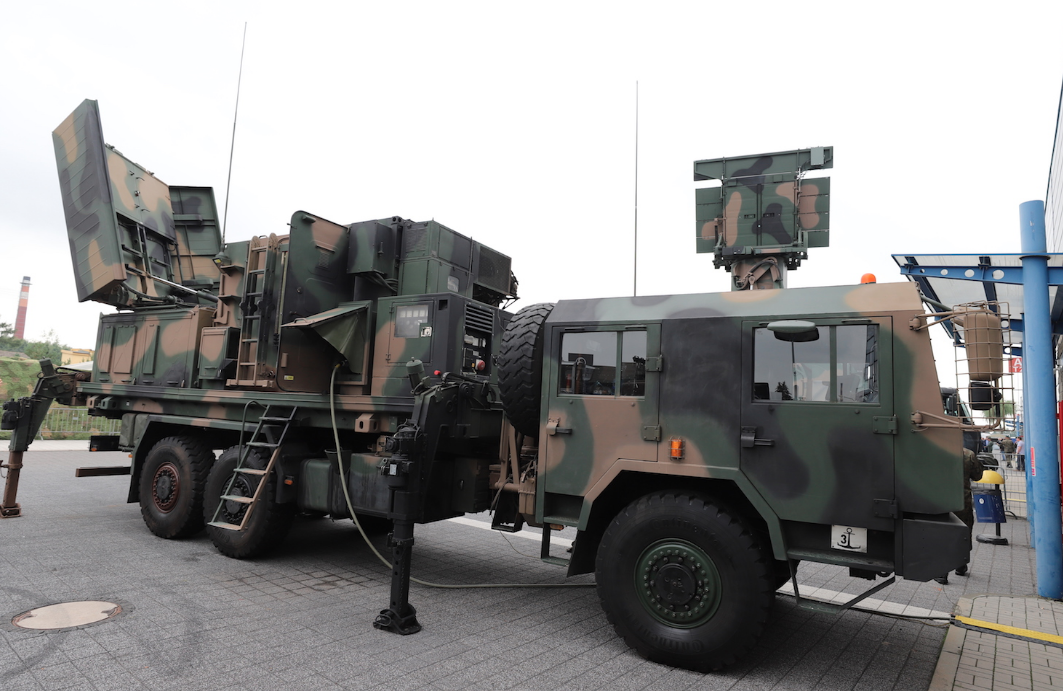
One-eyed artillery?
Artillery reconnaissance issue extends beyond the domain of the UAVs. For instance, LIWIEC radars developed by the state-owned PIT-RADWAR company that have been integrated with Topaz (just like the FlyEye UAV was) can be ranked among the best in their class. Furthermore, the best results are obtained (especially at longer distances) when both drone as well as radar are used at the same time. So far, however, the military has been using only 10 LIWIEC systems (last ones delivered in 2018) and nothing suggests that a change is going to come. “When it comes to the RZRA LIWIEC system, according to the Technical Modernization Plan [PMT] remaining in force, no further procurement of the radars for the Polish military is expected” - the Polish Ministry of Defence responded to our inquiries.
Here, it is worth to define the context. The PMT is valid until 2026, and no LIWIEC procurement is planned to happen by then. The military, on the other hand, by the year 2024, is to receive five (120 examples) Krab sph battalion. Furthermore, at least four artillery battalions are still operating the Dana howitzers. At least 80 of them have been integrated with Topaz, with 111 Dana systems remaining in service in total. 20 HIMARS launchers would also enter service by 2023, not to mention 75 Langusta launchers that are distributed across 3 battalions. The WR-40 Langusta system is still to receive new effector with a range of 40 kilometres. Langusta elements are also to be complemented by modern command vehicles. The above means that ca. 300 cannons and launchers remain at disposal of the Polish artillery units. The component also includes Gvozdika sphs and Rak mortars, and they can also hit targets closer up, but beyond the line of sight, if only firing solutions are provided to the crews.
In case of the US Army, each artillery battalion/squadron at a brigade (armoured/motorized (Stryker)/infantry - ABCT/SBCT/IBCT) level usually used 18 cannons. And each of elements as such usually (according to the FM 3-96 manual issued in 2015) involves two Q-53 radars. More Q-53 radars can be spotted at the higher DIVARTY level or in a rocket artillery brigade, and that count does not include the light Q-50 radars. 189 Q-53 radars are soon to remain at disposal of the US Army. 2019 FY budget envisages procurement of those systems as well. The radars in question would also support 2.5 thousand artillery assets, including 155 mm M777 and M109 howitzers, HIMARS and MLRS rocket launchers (additional acquisitions included) and 105 mm M119 howitzers (around 500 of those remain operational).
A similar situation can be witnessed in Germany. The Bundeswehr operates 10 COBRA radar systems (COunter-Battery-RAdar), a little over 100 155 mm howitzers and 38 MLRS launchers (with modernization planned here) distributed across four battalion size units. Each battalion operates its own KzO UAV set. These assets are used for fire coordination purposes, they are also used by recce battalions of the brigades. Replacement is expected soon. The Bundeswehr has more than 40 KzO drones at its disposal. The quantity is similar to the quantity of the FlyEye systems available to the Polish artillery units, but the Germans have 150 launchers and howitzers at their disposal. The number of strike systems (howitzers, MLRs) in Polish Army is much higher.
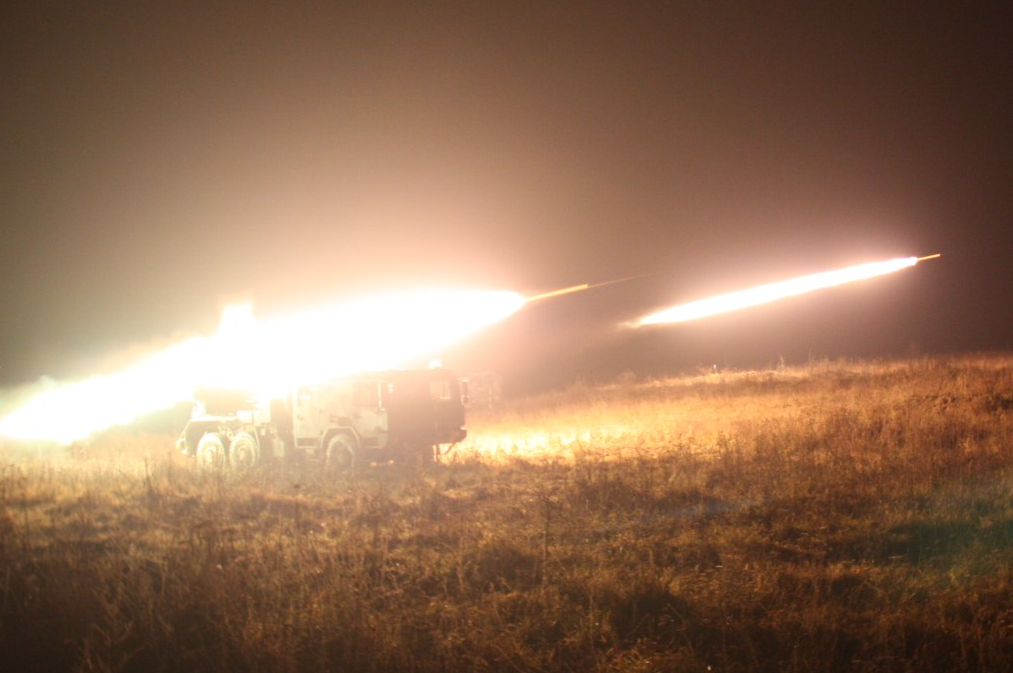
The US Army organizes its structure in a manner that is a bit different - there the UAVs are not directly embedded within the artillery battalions, but the UAV elements, at a number of levels, are tightly working together with artillery units. The number of the available unmanned platforms is also higher by a significant amount. It is clearly visible that the Polish artillery component is undersaturated, when it comes to the recce assets. The countries listed have one radar assigned to around 15 guns - not 30 or 50-60 (the latter situation is the case if we include the Gvozdika and unmodernized BM-21/RM-70 systems in the equation).
Obviously, one may say that other reconnaissance measures exist as well. Nonetheless, the Polish artillerymen are in trouble if those assets are taken into account as well. No specialized reconnaissance vehicles are available to them, contrary to what happens in case of the US Army or the Bundeswehr. The contract concerning the Bystra radars that are expected to be used by the air defence units (but offering a capability to detect artillery rounds) has not been signed. We also do not have any knowledge whatsoever, as to when the battlefield reconnaissance radars tendering procedure is going to be finalized. And as the artillery range becomes greater (e.g. as Gvozdika systems are replaced by the Krab platform) the need to introduce reconnaissance means with a proper range would also be becoming greater.
Development of the Topaz System
Topaz System is being developed in a manner that is continuous and consistent. It has also been integrated with the Warmate loitering munitions and the FT-5 Łoś UAV (longer range platform - up to 180 kilometres). All of those assets, along with the fire control system, form a complex SWARM suite. Using the said system, the commander may recognize the targets with the use of UAVs and decide which assets should be used - guns, rockets, mortars or loitering munitions.
“Sokół” system, including the Topaz solution and FlyEye UAVs integrated onto a “Kozak” vehicle, is being tested in Ukraine. Both UAV types have already been introduced into operational use by the Ukrainians, while the FlyEye UAVs are undergoing a modernization. They can carry out reconnaissance at distances of up to 50 kilometers. FlyEye has also been integrated with a new optronic sensor and despite its belonging to the “mini” class, it can also carry a radar. When it comes to LIWIEC, the radar offers some upgrade potential, including the option of using an AESA antenna array.
Polish Artillery - A Paradox
One may say that we are witnessing a certain kind of a paradox, in case of the Polish artillery units. Contrary to the remaining domains, the aforesaid elements cannot complain about the age of the equipment they receive. This is very good. At the same time one cannot help but notice that modernization of the reconnaissance system is practically brought to a halt, despite the fact that the military has already implemented a modern solution within that regard, that is modern enough to make the allies jealous. Should no reconnaissance assets remain available, the artillery procurement made by the MoD (very much needed) may turn out to end up in acquisition of assets that would mainly be... useful "on parades".
Who is behind the decisions making the equipment of the Polish military incomplete, and why decisions as such are made, considering the fact that relatively little money is needed to make the acquisitions complete? The procured equipment may become virtually useless, or partially usable - in the best case scenario. It is quite difficult to understand why circumstances as such are emerging.
